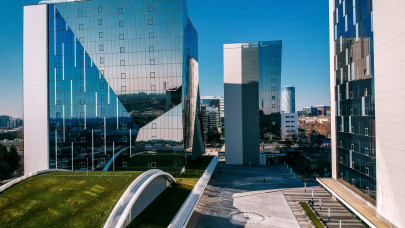All new buildings should be zero-emission from 2028, with the deadline for new buildings occupied, operated or owned by public authorities in 2026. All new buildings should be equipped with solar technologies by 2028, where technically suitable and economically feasible, while residential buildings undergoing major renovation have until 2032.
Residential buildings would have to achieve, at a minimum, energy performance class E by 2030, and D by 2033 - on a scale going from A to G, the latter corresponding to the 15% worst-performing buildings in the national stock of a member state.
Non-residential and public buildings would have to achieve the same ratings by 2027 and 2030 respectively. The upgrade in the energy performance (which can take the form of insulation works or improvement in the heating system) would take place when a building is sold or undergoes a major renovation or if it is being rented when a new contract is signed.
Member states will establish the measures needed to achieve these targets in their national renovation plans.
These national renovation plans should include support schemes to facilitate access to grants and funding. Member states need to put in place free-of-charge information points and cost-neutral renovation schemes. Financial measures should provide an important premium for deep renovations, especially of the worst-performing buildings, and targeted grants and subsidies should be made available to vulnerable households.
Monuments would be excluded from the new rules, while EU countries may decide to also exclude buildings protected for their special architectural or historical merit, technical buildings, buildings used temporarily, and churches and places of worship. Member states may also exempt public social housing, where renovations would lead to rent increases that cannot be compensated by savings on energy bills.
MEPs also want to allow member states to adjust the new targets in a limited share of buildings depending on the economic and technical feasibility of the renovations and the availability of a skilled workforce.
“Soaring energy prices have put the focus on energy efficiency and energy saving measures. Improving the performance of Europe's buildings will reduce bills and our dependence on energy imports. We want the directive to reduce energy poverty and bring down emissions, and provide better indoor environments for people's health. This is a growth strategy for Europe that will deliver hundreds of thousands of good quality, local jobs in the construction, renovation, and renewable industries while improving the well-being of millions of people living in Europe”, says the rapporteur for the Energy Performance of Buildings Directive Ciarán Cuffe (Greens/EFA, IE).
Parliament adopted its position by 343 votes to 216, with 78 abstentions. MEPs will now enter into negotiations with Council to agree on the final shape of the bill.
According to the European Commission, buildings in the EU are responsible for 40% of our energy consumption and 36% of greenhouse gas emissions. On 15 December 2021, the European Commission adopted a legislative proposal to revise the Energy Performance of Buildings Directive, as part of the so-called ‘Fit for 55' package. A new European Climate Law (July 2021) enshrined both the 2030 and the 2050 targets into binding European law.












